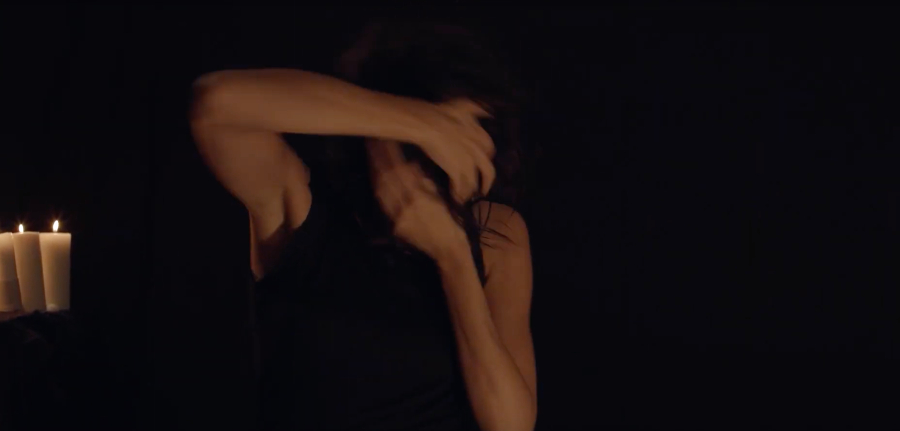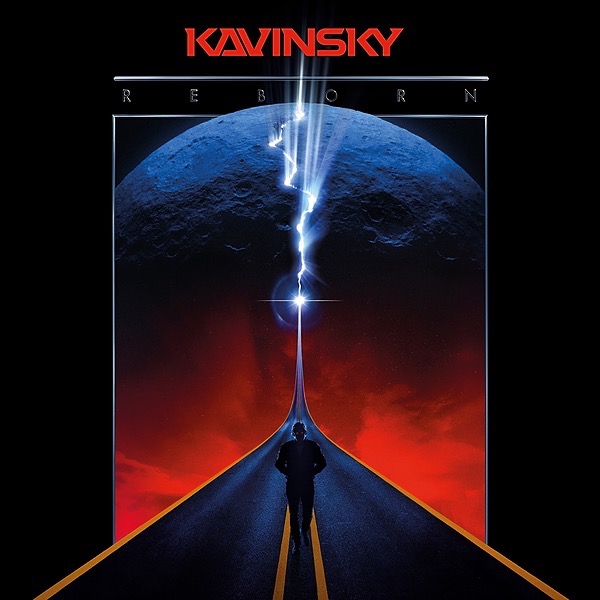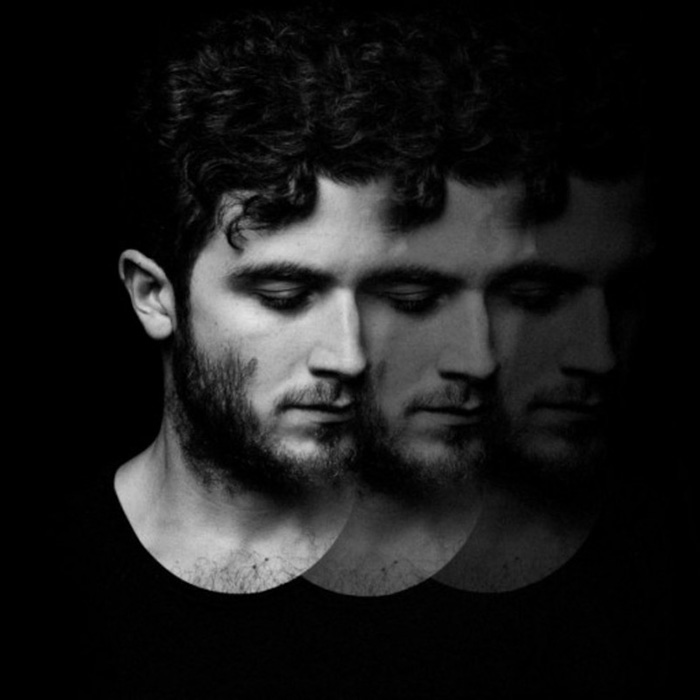Interview: Five Minutes with Vincenzo Ramaglia
Teacher and musicologist Vincenzo Ramaglia carries a wealth of knowledge of all things musical. The Roman musician has just shared his latest single, ‘La parole 7’ (feat. Laure Le Prunenec) via PEM Records with the music video for the song premiering yesterday via Vents Magazine. The track displays Ramaglia’s years of experience along with a playful and creative side that only truly comes to (candle) light in his video.
Ramaglia has displayed great respect for his collaborator Laure Le Prunenec, as the two partake in this musical journey together. Rather than focussing on lyrics, the two embrace harmonising, resonance and frequencies within non-linguistic syllables produced by Le Prunenec. In short, expect a language that you’ve definitely never heard of before. Just to make things more interesting, Ramaglia’s entire upcoming album: La parole is conceived via an electronic setup without a computer
Curious about the musician who is able to push the boundaries of music while simultaneously teaching them, we knew we had to sit down for an exclusive interview.
Set the tone for us. Why the arts?
I discovered very early on how art in general and music, in particular, were the pivot of my life, in a sense even something salvific. When I try to live without art, concentrating only on the practical aspects of life, for example, I feel so sick, even physically, that art also becomes a practical aspect of life, indispensable for moving forward in everything else. Moreover, life without art would be so empty and boring.
Which comes first when you’re producing – the sound or the idea?
In my case, first, there is the idea. But the sound almost always subverts it and turns it into something new. In the end, the two elements can no longer be split. Aristotle was already unable to separate matter from form and invented the “synolon”. In my opinion, there should be a sort of “synolon” even between sound and idea…
Does your material feature any collaborations?
Yes, it lives on collaborations. I often look for collaborators who are the exact opposite of me. I am a structuralist who needs collaborators free from any structuralism – artists who express themselves hic et nunc, relying on the extemporaneous and pulsating inspiration of the moment. The chemistry that is created between the two opposites is magical, as in the case of the collaboration with Renato Ciunfrini (for my last album “Atomic City”) and with Laure Le Prunenec (for my incoming album “La parole”).

What’s on your current playlist?
Igor Stravinskij, Autechre, Giuseppe Verdi, Björk, Krzysztof Penderecki, Radiohead, Sergej Prokof’ev, Portishead, Arvo Pärt, Squarepusher, Salvatore Sciarrino, Gustav Mahler, Venetian Snares, Maurice Ravel, Sigur Rós, György Ligeti, Alva Noto, Claudio Monteverdi, Ryoji Ikeda, Henry Purcell, Murcof, Aleksandr Skrjabin… do I have to go on? 😉
Tell us about the chemistry you have with your fans on stage.
My last live show was twenty years ago (in the twentieth century!) in a concert hall, on a grand piano: the audience always reacted very well because it struck by how a calm and polite person like me composed and played so percussive piano pieces (very Bartók style).
After so long, finally, I’m setting up a live show in which my hands will vent no more on the keys of a piano, but on knobs, faders and pads… The percussive element, in a sense, remains, but there is so much more and chemistry with the public will be something completely different. I can’t wait to find out!
What techniques do you experiment with to get your original sound?
At the moment, I like to use an electronic setup without a computer and build complex scaffolding of sequences (mostly analogue and/or based on vocal samples), numerous and of different lengths, weaving extreme polyrhythmias and polyharmonies. These scaffoldings are the purely compositional work (similar to that of elaborating an orchestral score).
Then, I move on to the improvisational and manipulative phase: I record myself while my hands, in a frantic way, rhythmically segment and alter with effects the various parts of these scaffoldings through various techniques/instruments. I would call it “real-time breakcore”, if it so often did not allow itself such contemplative moments as to touch the ambient.
On these foundations, I edit the improvisations of my collaborators: in the case of La parole, the extraordinary voice of Laure Le Prunenec.
Take us through a day in the recording studio.
Take for example La parole. It all starts in my home recording studio. I open the flightcase, put myself on the setup and compose the sequences (without recording, with the computer off). This phase can last several days for each track.
When what I saved in my setup is satisfying for me, I turn on the computer and record my impromptu manipulations on what I have just composed. Then, I send the track to Laure (her feedback is obviously the most important for me) and she sends me some vocal improvisations.
I edit Laure’s vocal improvisations on my electronics and bring the result into my trusted professional recording studio to mix the two lines (voice and electronics) in the best possible way. It is a moment that I particularly love because sound professionals interact for the first time with my tracks. An important moment of sharing, not just of work.
The same emotions concern the final phase, the mastering, in another professional studio I trust. Here, I have the feeling of the real birth of my album.

Was there a specific moment in your life where you thought, “this is what I want to do”?
It has happened so many times in my life. In my childhood, when I made a somewhat abstruse drawing with this caption: “I want to do beautiful and complex things”.
In my pre-adolescence, when, looking astonished at great pianists performing, I told my parents: “I want to study music”.
In my adolescence, when I started putting my ideas on the keyboard and I said to myself: “You don’t want to be a pianist, you want to be a composer”.
When I felt the unforgettable emotion of listening and seeing for the first time an entire orchestra performing my own composition and I thought: “The orchestra is my future”.
After graduating in composition (ten years of study at the conservatory), when I took the painful decision to make tabula rasa of all my academic superstructures and put myself in search of a new musical language.
In 2011, when I gave a name to what I always tried to do (“Popular Experimental Music”), after having released 3 albums (so different from each other). That is when I started to build an electronic setup and to deepen it over time.
In 2017, when I realized that electronics had finally conquered me and I had the distinct feeling that I had found my own approach and something new to say in the context of our musical present.
What do you keep close by while you’re playing a set?
My reflex camera. When I play a (music) set, I also prepare a (movie) set. My compositions often become music videos.
I am the director of the Griffith Academy of Cinema and Television in Rome and I frequently involve teachers and students of my school in making these videos, that I myself direct and edit.
Any emerging artists on your radar?
There are so many that mentioning just a few would be unfair. Because there is a teeming undergrowth of young talents often totally overruled by the mainstream. Sometimes, I feel like a speleologist looking for them in the maze of the internet. It is not so easy to find them but they are there. And when I find them it is always an honour for me to collaborate. In a sense, I reflect in them.
What gets your creative juices flowing?
Sometimes, a sudden idea (like a spark in the dark) that I absolutely need to look into. Sometimes, a journey, a place, a lanscape, a work of art. A person, a feeling, a fixation. Sometimes, a discomfort that I have to translate into music or to which I have to react with music.
Often a collaboration, a form of alchemy that I feel with another artist and that gives me an avalanche of inspiration. In any case, the creative process is very troubled, I roll in the mud until I’m sure I have taken the right path. But when I find it, satisfaction is priceless. At that moment the “creative juice” you speak overflows and I can no longer stop it…

Take us through your collection of gear, tech or software that accompanies your creative expression.
I have a collection of analog synths and hardware sequencers crowded next to my grand piano. My setup without a computer (used both in my last album “Atomic City” and in my incoming album “La parole”) consists of this gear: Dreadbox Erebus, DSI Tetra, Moog Minitaur, Nord Drum 2, Pioneer RMX-1000, Elektron Octatrack, Elektron Analog Four.
However, new tools have just arrived to meet new needs.

Any side projects you’re working on?
New tools and new needs, in fact, concerning a new album I just started working on…
How have you refined your craft since you entered the industry?
Very very much. You never stop refining your craft. Each project – also through the communicative impact with the outside world – teaches something to perfect the next. It is good that this process is endless.
Breakdown the news for us: what can we expect from you next year?
Next year will start with the release of my new album “La parole”, but will follow with my first live tour as an electronic musician and with new record projects…

Famous last words?
“This is the girl” (Mulholland Drive)
Follow Laure Le Prunenec:
Follow Vincenzo Ramaglia:
Bandcamp – Facebook – Twitter – Soundcloud – Youtube – Instagram – Spotify



